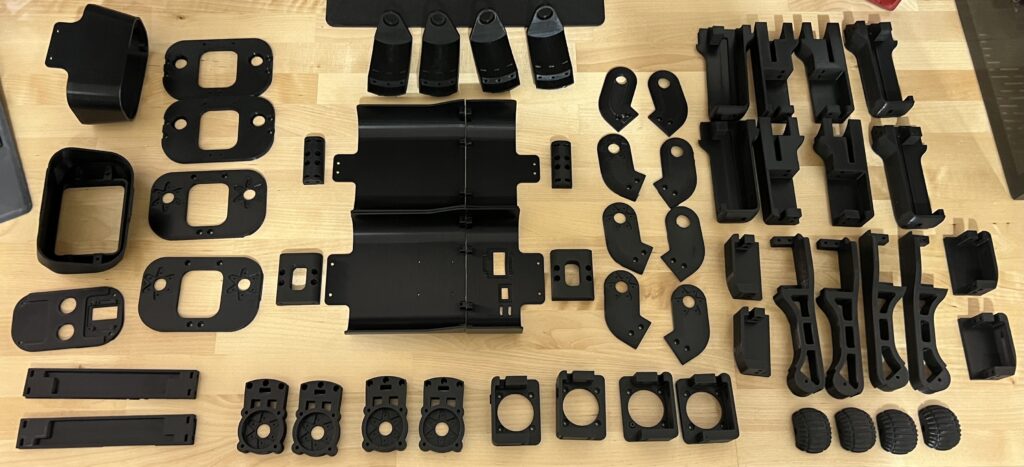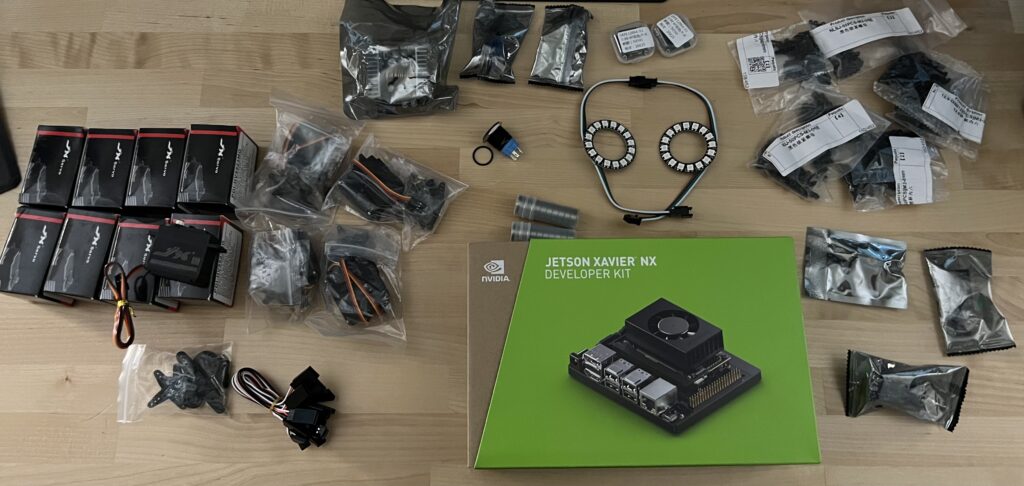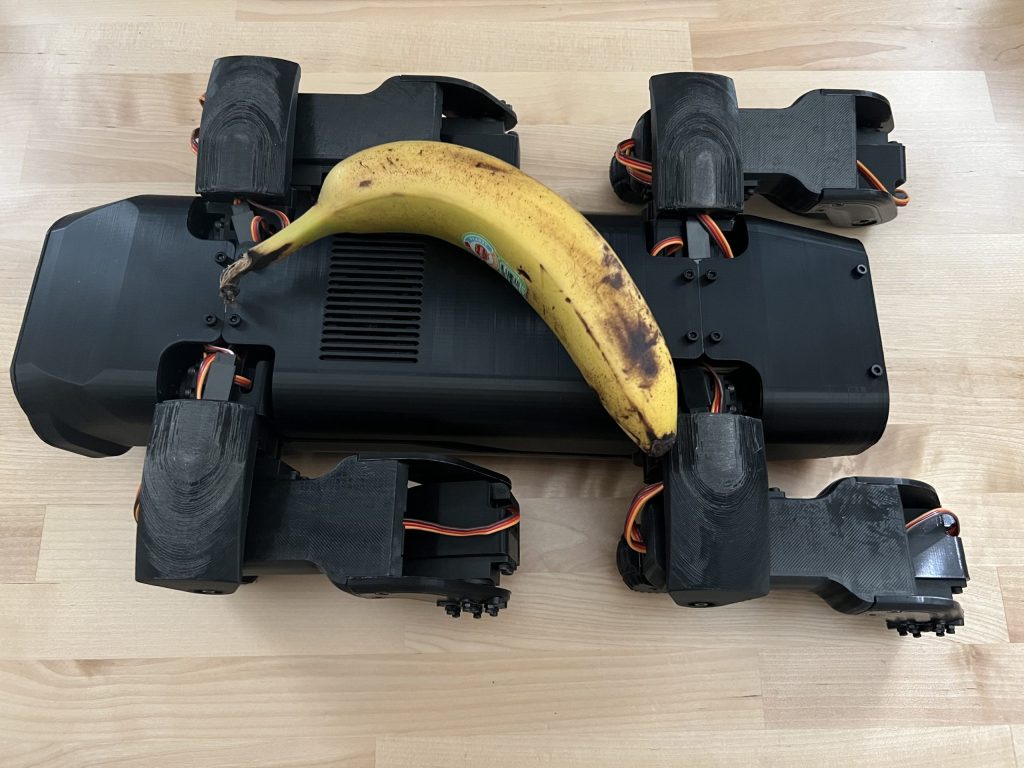Boston Dynamics’ Spot robot is something that has always fascinated me. But the price tag of $75000 is hard to digest considering I’m just a regular guy. Luckily, folks at SpotMicroAI had started designing the Spot Micro – an open-source project where anyone could 3D print most of the components of the robot and put it together. They even had some basic software to get the robot up and running.
However, there were just too many limitations with the original design – the servo motors were weak, the legs struggled to move properly, and the onboard electronics were absolutely barebones. Luckily, some people in the community decided to take the matter into their own hands – for example, someone designed the shoulders for the legs so that they could move properly with support. There were designs with different servo motors, but I had to modify the designs to best fit some good quality servo motors I ordered online. Finally, the biggest task was to fully redo the electronics in the robot to support Intel realsense D450 module and Nvidia Jetson Xavier NX dev kit. I also had to build a full power circuit including the power system, battery charging and balancing circuit, power converters, servo power distributor, and interface circuit between servo motors and Xavier NX.

The above picture gives you an idea of the number of 3D prints required here.

These are the electronics required for the robot. Probably the most expensive component here is the Jetson Xavier NX dev kit ($399), but that can be replaced with something like Jetson Nano ($149) – with a significant compromise on the performance of running Deep Neural Networks on the device.
Components used:
- Tough PLA – 2 kg – $60
- Nvidia Jetson Xavier NX – 1 – $400
- Intel Realsense D450 + D4 board + cables – 1 – $250
- PDI-HV5523MG Servo Motors – 12 – $160
- 3000mAh 3S Li-Po battery – 1 – $30
- PCA9685 16ch Servo board – 1 – $10
- 300W DC Step down converter – $10
- Ball bearnings – 12 – $10
- Servo Extensions – 12 – $10
- IPEX MHF4 antennas for Jetson – 1 – $10
- Power connectors, buttons, wires, solder, etc. – 1 – $10
- M2 – 8mm, M3 – 8mm, M3 – 20mm bolts, M2 nuts, 2x M3 nuts – 100 – $30
The above components add up to $990, which is far more digestible than that $75000 price tag. But it is of lower build quality, worse sensing system, and consists of almost zero software. On the bright side, you get to learn about building and calibrating robots and you can easily fix it if/when it gets damaged.

Here is the completed robot with a banana for scale. Over time, we’ll keep building the software here. With the right sensing and compute, it is possible to develop this robot to a level where it can autonomously operate in an indoor environment. Since this is a significant departure from the existing Spot Micro, we’ll refer to this robot as the Spot Micro Pro.
Interested in building this robot? I’ll separately post a build guide for the same.

